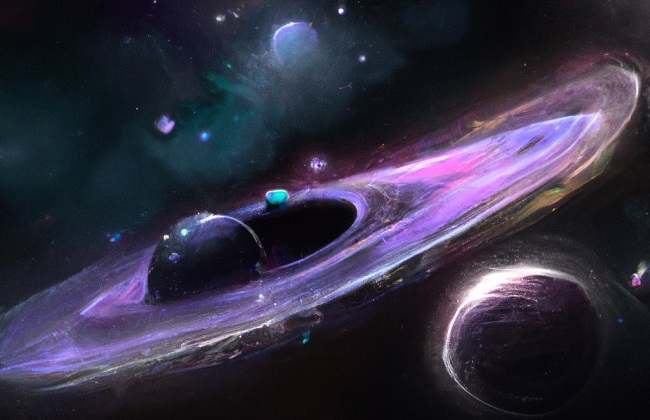
Dark matter is a mysterious and elusive substance that is believed to make up a large portion of the universe’s mass. Despite its name, dark matter does not actually emit or reflect light, which makes it difficult to detect and study. However, its presence can be inferred through its gravitational effects on visible matter, such as galaxies and stars.
The concept of dark matter was first proposed in the 1930s by astrophysicist Fritz Zwicky, who observed that the mass of the galaxies in the Coma Cluster was not sufficient to account for the cluster’s gravitational effects. This led him to suggest the existence of a “dark matter” component that would provide the extra mass needed to explain the observed gravitational effects.
Since then, numerous studies have provided evidence for the existence of dark matter. For example, the observed rotation of galaxies and the way they move within clusters can only be explained if there is a large amount of unseen mass providing the necessary gravitational pull. Similarly, the observed gravitational lensing of light around galaxy clusters also requires the presence of a significant amount of unseen mass.
Despite the evidence for its existence, the nature of dark matter remains a mystery. It is not yet known what dark matter is made of, or what its properties are. Some theories propose that dark matter is made up of exotic particles that do not interact with light or other forms of electromagnetic radiation, which would explain why it is so difficult to detect.
One popular theory is that dark matter is made up of weakly interacting massive particles (WIMPs), which are hypothetical particles that only interact through gravity and the weak force. Another theory is that dark matter is composed of axions, which are very light and weakly interacting particles that are predicted by some theories of particle physics.
Despite the lack of definitive answers, the study of dark matter is an active area of research in astronomy and astrophysics. Many experiments are currently underway to try to detect and study dark matter, including the Large Underground Xenon (LUX) experiment, which uses a large tank of liquid xenon to search for WIMPs, and the Axion Dark Matter Experiment (ADMX), which uses a magnetic field and a microwave cavity to search for axions.
Dark Matter in Popular Culture
In addition to its scientific significance, dark matter has also captured the imagination of popular culture. It has been featured in a variety of works of science fiction, such as the “Star Wars” franchise, where it is referred to as “kyber crystals” and is used as a power source for lightsabers and other technology.
In the science fiction novel “Dune,” dark matter is called “melange” and is used as a valuable and rare spice that grants psychic abilities and extends lifespan. In the “Mass Effect” video game series, dark matter is called “element zero” and is used to power advanced technology, such as faster-than-light travel and biotic abilities.
Dark matter has also been the subject of scientific speculation in popular media. For example, in the television series “Cosmos: A Spacetime Odyssey,” host Neil deGrasse Tyson discusses the possibility of dark matter being made up of black holes or other exotic objects.
Overall, the concept of dark matter has entered the realm of popular culture, where it is often portrayed as a mysterious and powerful substance with unique properties. While its true nature remains unknown, dark matter continues to fascinate and inspire both scientists and the general public.
In conclusion, dark matter is a mysterious and elusive substance that is believed to make up a large portion of the universe’s mass. While its exact nature is still unknown, its existence is supported by a wealth of evidence from astronomical observations. The study of dark matter continues to be a fascinating and active field of research, as scientists try to unravel the secrets of this mysterious substance.
This essay was created by ChatGPT and the images by DALL-E 2. Edited by Omri Shabath.



